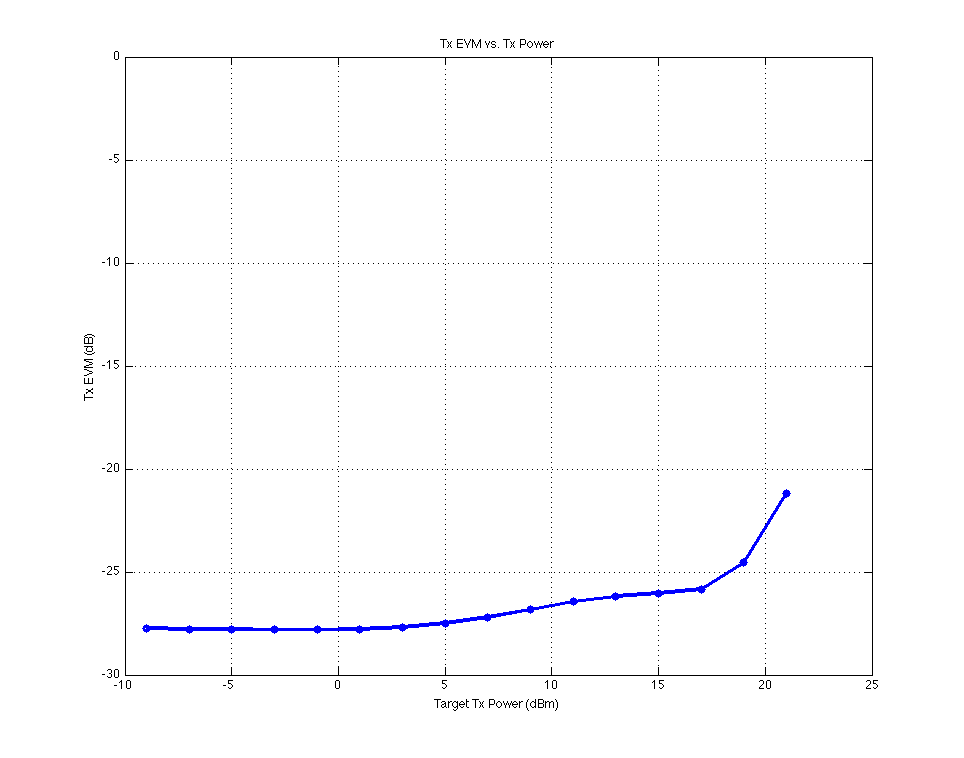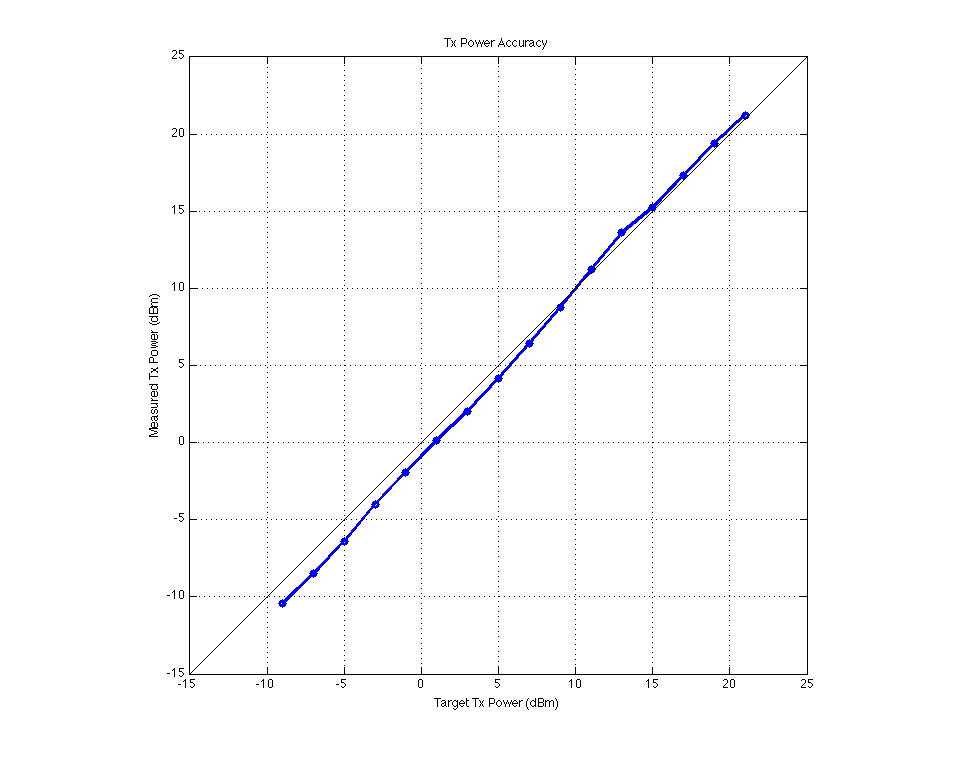Transmitter Characterization
The IEEE 802.11 Standard specifies minimum tolerances on the quality of emitted waveforms from WLAN devices. These tolerances are specified in as Error Vector Magnitude (EVM) in dBm. For the OFDM PHY in 802.11a/g, the tolerances are presented in Section 18.3.9.7.4 of 802.11-2012 and are reproduced below:
| Rate | Modulation / Coding | EVM (dB) |
|---|---|---|
| 6 Mbps | BPSK 1/2 | -5 |
| 9 Mbps | BPSK 3/4 | -8 |
| 12 Mbps | QPSK 1/2 | -10 |
| 18 Mbps | QPSK 3/4 | -13 |
| 24 Mbps | 16-QAM 1/2 | -16 |
| 36 Mbps | 16-QAM 3/4 | -19 |
| 48 Mbps | 64-QAM 1/2 | -22 |
| 54 Mbps | 64-QAM 2/3 | -25 |
This table codifies the intuition that high-order modulation and coding rates are more sensitive than their low rate counterparts. Therefore, the quality requirements on the waveform are more stringent for the higher rates.
Transmit EVM Test
The 802.11 standard also specifies the procedure in which similar values can be measured for WLAN devices in Section 18.3.9.8 of 802.11-2012. To perform these measurements, you need calibrated test equipment whose with measurements you can trust. We have used the Keysight N4010A Wireless Connectivity Test Set. For this test, we use the N4010A's ability to accurately measure the EVM of transmissions from the Mango 802.11 Reference Design on WARP v3. We also use the N4010A's accurate Tx power measurement to measure the accuracy of the Mango 802.11 Reference Design's Tx power parameter. The N4010A can be scripted via Ethernet, so we can write a single Python script that controls both the N4010A as well as the 802.11 Reference Design via the WLAN Experiments Framework.

|
| Experimental Setup |
The above figure shows the setup of this test. The WARP v3 kit cabled to the N4010A with 15 dB of external attenuation applied. Note: this 15dB is compensated for and is de-embedded from the below results.
Methodology
Using the WLAN Experiments Framework, we perform the following steps:
- Set the transmission power of the WARP v3 kit via the set_tx_power wlan_exp command
- Start an LTG stream to a multicast address
- Measure the EVM of the transmission with the N4010A
- Halt the LTG stream
The above steps are repeated for different transmission powers. Furthermore, this entire experiment was repeated and averaged across 4 different RF interfaces on 2 different WARP v3 kits.

|
The above figure shows the results from this experiment. In all but the highest transmission powers (≤ 17dBm), our Tx EVM is better than the -25 dB tolerance specified by the standard for the highest 54 Mbps rate. Even higher transmit powers up to 21 dBm are still within tolerance for lower PHY rates.
Transmit Power Accuracy Test
In the previous EVM experiments, you may have noticed the label on the x-axis is "target" transmit power. This is the independent variable supplied to the set_tx_power wlan_exp command. The N4010A also provides an accurate measure of actual transmit power. The methodology for this experiment is the same as the transmit EVM test. In fact, both EVM and actual transmit power can be measured simultaneously.

|
The above results show the measured transmit power vs. the target transmit power provided to the wlan_exp command. The 45 degree black line shows a perfect match for the sake of comparison. Again, these measurements are averaged across 4 different RF interfaces on 2 different WARP v3 kits.
Attachments (3)
- setup.png (46.3 KB) - added by chunter 10 years ago.
- tx_power_accuracy.png (13.2 KB) - added by chunter 10 years ago.
- evm_vs_tx_power.png (10.4 KB) - added by chunter 10 years ago.
Download all attachments as: .zip